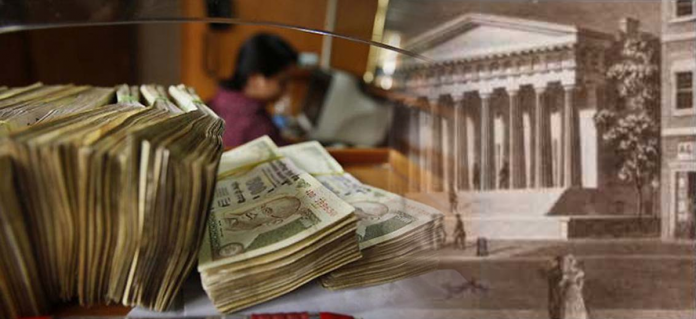Banks play an important role in the financial and economic growth of a country. Banks not only make a country economically stronger and but also help the citizen of the country to have a better lifestyle.
We all need banks to have saving accounts or to get a loan for a home, vehicle or business. In today’s time, the entire world runs smoothly on credit. You must be thinking that the idea of banking is very modern but actually it’s an old practice. The history of banking is very ancient and interesting.
Let’s know more about the history of banking.
History of banking
In ancient time farmers and traders used to take loans from the merchants. This credit practice was presented in 2000 BC in ancient civilizations on India, Sumeria, and Assyria.
In ancient Greece especially in the Roman Empire, temples used to give loans. The temple also used to be the safest place, so rich trader and merchants used to keep their gold in those temples. So we can say that the ancient temples were the first banks to provide the locker services.
According to the recorded history Jews used to lend the money to the needy people. Later on, goldsmiths took over this work from Jews. Goldsmiths started the basic banks at that time. Their duty was not only limited to lending the money, but they also started to deposit the money of the merchants. These goldsmiths used to give a banknote to the merchants against their deposited amount. They also started to give the merchant’s money on credit to others in the interest to earn more money. They also used to pay the interest to the merchants on their deposited amount. Merchants also used to issue cheques at that time to tell the goldsmiths to give the money to another one with the authorized letter. This is the same process on which today’s banks work.
Origin of Modern Banking
The early years of modern banking were not well organized. Before 1600, the money lending services were slowly transforming into banking but not in an organized manner. That time was known as the unregulated era of banking.
Before 1600 anyone can open a bank. Many business families in Italy, Germany and many other countries had started their own banking business. This business proved profitable for them and these families became powerful. Grimaldi, Spinola and Pallavicino families from Italy, Mendès family from Spain are just a few examples of the powerful and wealthy families who started their own banks.
Before the 17th century, many banks were working but their work was not formal. Their work was similar to the work of merchants or goldsmiths but with a proper process.
The exact dawn of modern banking happened at the end of the 16th century. During the 17th century, banks had started all the operations of banking like accepting deposits, money lending, and money changing, and transferring funds. These modern banks helped in the growth of industrialization. By that time banks became the safe and reliable source of credit and deposit money. Now, banks were playing an important role in the European economy so it was decided to formalize the banks by putting government regulations on it and by opening a central bank.
That’s how the modern banking started.
History of Banking in India
The traces of banking in India reveal that banking was presented here even in the Vedic era. The great Hindu jurist, Manu has also mentioned about the practice of taking credit or lending money in his work. He has devoted one section of his work to the banking practice. Manu has also defined the suitable interest on the money. Later on during the Maurya Dynasty, an instrument named Adesha was used. Adesha was the old form of modern cheques.
To understand the history of banking in India, we divide the Indian banking system into two phases.
- Pre-Independence Phase (1786-1947)
- Post- Independence Phase (1947 to till date)
Pre-Independence Phase of Indian Banking
Here are the important points about the pre-independence phase of Indian Banking.
- More than 600 banks were presented in the pre-independence phase of Indian banking.
- The pre-independence phase of Indian banking had many private banks organized as joint stock. The first bank of India, ‘Bank of Hindustan’ was established in 1770 at Calcutta under the European management. But it was liquidated in 1829–32.
- Many banks were established at that time and most of them were not very successful but few banks like Allahabad Bank (est. 1865) and Punjab National bank (est. 1894 in Lahore) are still working.
- Before Independence in 1860, Calcutta became the preferred place for foreign banks. Grindlays Bank opened its branch in Calcutta in 1864. HSBC also opened its branch in Bengal in 1869.
- Banks like Bank of India (est. 1906), Indian Bank (est. 1907), Bank of Baroda (1908), Central Bank of India (1911) and many more were established during the Swadeshi movement.
- During World War-I due to the economic crisis, 94 Indian banks were failed.
- The RBI was established on the basis of Hilton-Young Commission report in 1935.
- During the pre-independence phase of Indian banking, the banking facilities were only for urban areas and rural areas were totally neglected.
Post-Independence Phase of Indian Banking
The post-independence phase of Indian Banking may further be divided into three phases-
- Pre-nationalisation Period (1947 to 1969)
- Post nationalization Period (1969 to 1991)
- Liberalisation Period (1991 to till date)
Pre-nationalisation Period
The important points of the pre-nationalisation period of Indian banking history are summed up below.
- On 1st January 1949, the Reserve Bank of India (RBI) was nationalized.
- The credit shares of industry increased in the banks but there was a decline in the shares of other trades. Most of the credit share was belong to industries such as engineering, iron and steel, and chemicals. Whereas small industries were dying slowly in absence of funds.
- The credit share of agriculture was only 2% in a pre-nationalisation period of Indian banking.
Post nationalization Period
Post nationalization Period is an important topic in the preparation of Bank Exam. During the pre-nationalization period in 1950-51, there were 430 private commercial banks in India. These banks were not very helpful in fulfilling the social objectives of Government of India. So in 1969, the government decides to nationalize 14 major commercial banks with a deposit base over 50 corers. In April 1980 the second dose of bank nationalization was given to 6 more banks.
Here we have summed up the important points of the post-nationalization period of banking.
- Nationalization of banks was the need at that time because the government was in need of direct funds for the weak sectors of the country.
- Most of the private banks were in the control of business houses so people from weak section could not get the benefits of bank services.
- To bring banks in the reach of people living in a rural area the nationalization of banks were needed.
- In 1969 following banks were nationalized:
- Allahabad Bank
- Bank of India
- Punjab National Bank
- Bank of Baroda
- Bank of Maharashtra
- Central Bank of India
- Canara Bank
- Dena Bank
- Indian Overseas Bank
- Indian Bank
- United Bank
- Syndicate Bank
- Union Bank of India
- UCO Bank
- In 1980 following banks were nationalized.
- Andhra Bank
- Corporation Bank
- New Bank of India
- Oriental Bank of Commerce
- Punjab & Sindh Bank
- Vijaya Bank
Liberalisation Period
In 1990, to improve the banking in public sector banks the government of India set up a committee under the chairmanship of Shri. M. Narasimham. This committee recommended many changes to reform the Indian banking system.
Here are the main points of the liberalisation period of banking in India.
- No more nationalization of banks was suggested by the committee.
- RBI started giving licenses to a small number of private banks.
- Foreign banks were allowed to open their offices and branches in India. With this move of the government of India, 10 private banks got a license from the RBI to entry in the Banking sector. These were Global Trust Bank, UTI (now known as ASIX), HDFC, ICICI, Bank of Punjab, IndusInd Bank, Centurion Bank, IDBI Bank, Times Bank, and Development Credit Bank.
Indian Banking system
After the liberalization period in India, Indian banking system divided in the following sector.
Scheduled banks: These banks can take a loan from RBI. All the commercial banks come under the category of scheduled banks. And all public sector banks, private sector banks, foreign and regional & rural banks come under the category of commercial and scheduled bank.
Unscheduled banks: The banks who keep their CRR with itself and unusually not eligible to take a loan from RBI comes under the category of unscheduled banks. All co-operative banks fall under this category.
The Bottom Line
An effective banking system strengthens the economy of the country. Here we have tried to sum up most of the important facts about the history of banking. Hope this will help you to gain more knowledge about the banking system.
For any further query or suggestion please feel free to reach us through comment box.











































